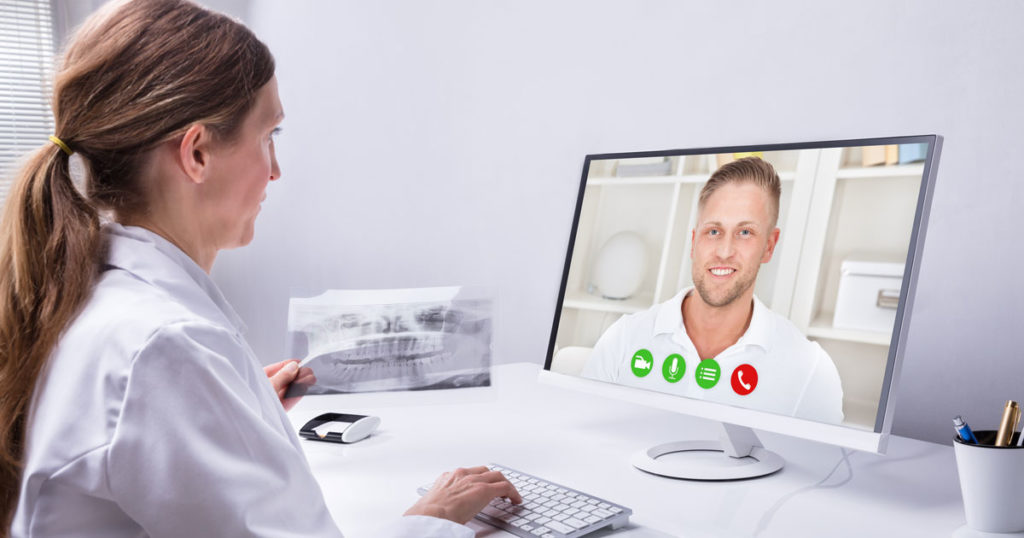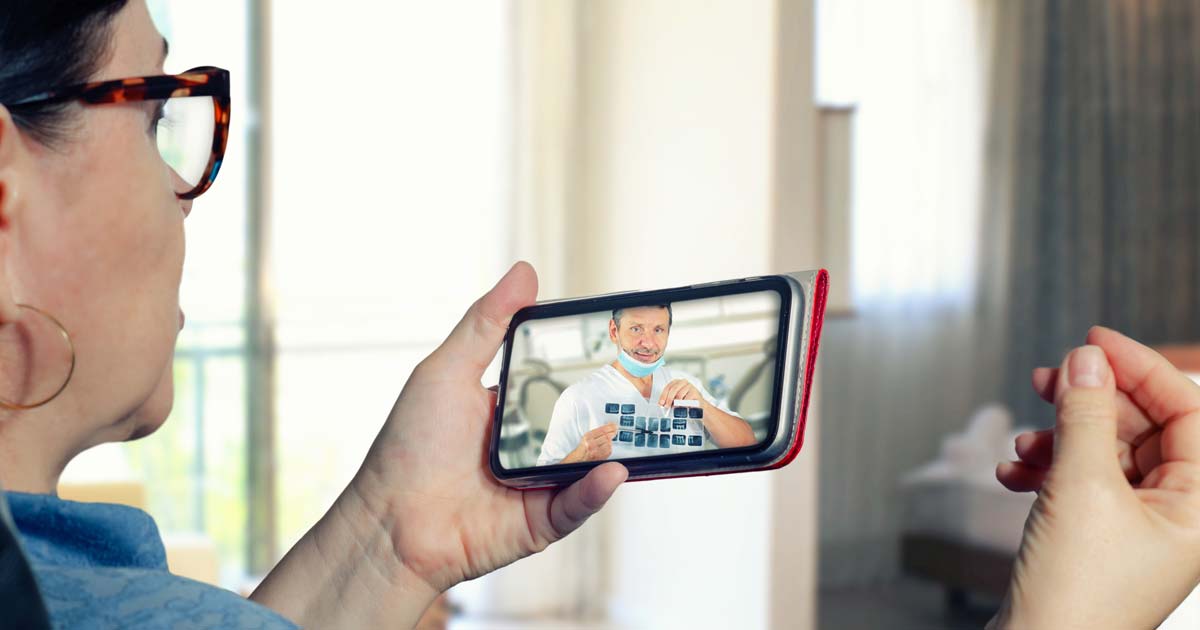
What is Teledentistry and How Can You Benefit During the Pandemic?
In the midst of the coronavirus pandemic, virtual meetings have replaced many interactions that normally would have occurred face-to-face. Businesses are holding meetings on Zoom, teachers and students are connecting through video calls, and late-night TV shows are being produced using live feeds instead of sound stages.
It turns out that your dentist may offer this type of virtual alternative as well!
Teledentistry, the ADA explains, uses technology to deliver virtual medical, health, and educational services. Some dental services are obviously impossible to perform digitally- a root canal or tooth extraction, for example- but many essential dental services can be accomplished using teledentistry.
Here’s what you need to know about teledentistry in the form of virtual smile consultations. What are they, and how can they improve your dental health?
What Are “Virtual Smile Consultations” and Why Should You Consider One?
Teledentistry, also known as a virtual smile consultation, makes it possible to receive dental care when you’re in one physical location and your dentist is in another. Smartphones, laptops, iPads, and other devices are used to communicate, send images and video, and perform as much oral care as possible.
A virtual smile consultation is a valuable and convenient tool, especially in the era of COVID-19. Dentists who offer teledentistry can achieve:
- Quick and easy accessibility to more patients
- Total safety from the coronavirus
- More affordable care
- Cosmetic smile evaluations for services like Invisalign, Whitening, Veneers & more
- Efficient in-office appointments for the patients who need them most
What Can You Expect to Learn During a Virtual Smile Consultation?
Just like a normal dentist appointment, your virtual smile consultation experience will be influenced by your dentist’s approach, personality, and practices.
Overall, here’s what you can expect during a virtual smile appointment:
- Live video for two-way interaction between you and your dentist
- Transmission of your health information for your dentist’s review
- Request for close-up pictures or video of problem areas
- Push notifications on your phone to remind you of daily dental habits or appointments
It’s best to schedule your virtual consultation during a time when you can sit in a quiet, well-lit room and give your full attention to your dentist. It’s also helpful to have any necessary medical devices on hand, such as oral appliances and a thermometer.

What Doctors Can and Can’t Assess During a Virtual Smile Consultation
A virtual smile consultation is a valuable tool to observe and diagnose oral conditions, as well as make recommendations for at-home prevention and treatment.
However, teledentistry cannot take the place of office-based dental care for emergencies, reconstruction, and other essential procedures. Actual treatment and some diagnoses can only take place in the dental office.
Is My Privacy Protected?
Changing the method of your dental care doesn’t change the guarantee of your privacy. In fact, the ADA specifies that “the delivery of services utilizing these modalities must abide by laws addressing privacy and security of a patient’s dental/medical information.”
It’s important to note that health care providers cannot control where you decide to take your virtual call. For privacy, it is best to be in your home and alone, or at least away from where other members of the household can hear you. For specific privacy questions, ask your dentist how the platform they use for virtual consults protects your privacy.
What Are the Costs and Does Insurance Cover Teledentistry?
According to the ADA, all dental benefit plans and insurance payers in public and private programs are required to provide coverage for services using teledentistry technologies and methods.
These benefits are to be “delivered to a covered person to the same extent that the services would be covered if they were provided through in-person encounters.” In other words, if your dental insurance covers a specific type of dental appointment or procedure in the office, it should cover it virtually as well. If you have specific questions, reach out to your insurance provider for clarification.
Overall, teledentistry offers a way to supplement in-office appointments, especially when the threat of COVID-19 is still high.

